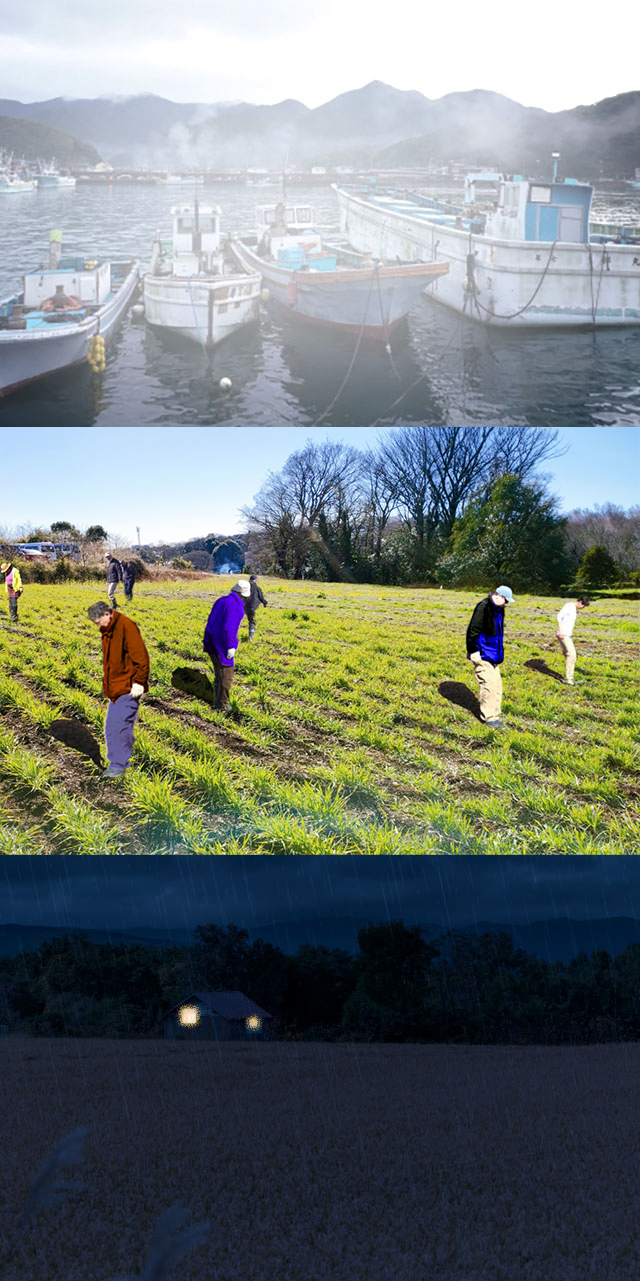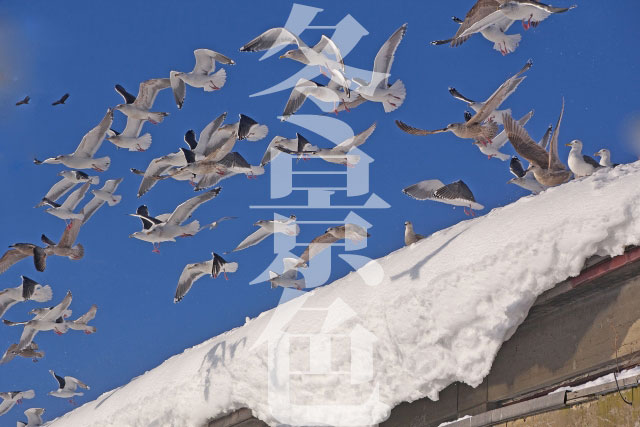Fuyugeshiki
Sakiri kiyuru minatoe no
Funeni shiroshi asano shimo
Tada mizudori no koe wa shite
Imada samezu kishi no ieKarasu nakite kinitakaku
Hito wa hatani mugi wo fumu
Geni koharubi no nodokeshiya
Kaerizaki no hana mo miyuArashi fukite kumo wa ochi
Shigure furite hi wa kurenu
Moshi tomoshibi no nurekozuba
Soreto wakaji nobe no satoLyricist:Unknown
composer:Unknown
in 1913
Winter Landscape
Fog disappears in the cove
White morning frost on the boat
The only sound is that of waterfowl.
The house on the shore, still not awakened.
Crows cawing, high in the trees
People are treading wheat in the field
It’s so peaceful, as if spring has come.
Some flowers seem to have bloomed prematurely.
Storms blow and clouds fall.
The drizzle are falling and the sun is setting.
If only a light had not leaked out and shone
I would not find the village by the fields.

This song portrays late autumn to early winter with a melody that evokes the crispness of winter. The lyrics depict three scenes: a mist-covered early morning in a fishing village, a peaceful afternoon in a tranquil mountain village, and an evening that conveys the arrival of freezing winter. The language used in the lyrics is characterized by an elevated and archaic style that may be challenging for contemporary Japanese people to immediately understand. However, the popularity of the song lies not so much in the literal meaning of the words but in the vivid landscapes conveyed through the feel of the language.

Nevertheless, douyo-shouka seems to have many outstanding songs in triple meter. “Fuyugeshiki,” released in 1913, can be considered a representative and pioneering work in this regard. However, both the lyricist and composer remain unknown. It is suggested that the collaborative nature of the Ministry of Education’s songwriting process at that time may be a reason for the lack of attribution. Despite some cases being revealed in later years, this song still remains a mystery.
It has been selected as one of “Japan’s Top 100 Songs.”
Both the lyricist and composer are unknown, so it is unclear which place inspired the song. Although the worldview of the lyrics is strongly associated with the Tohoku region, the monument is located in the Furusato Poetry Park in Yamaguchi Prefecture.





コメント